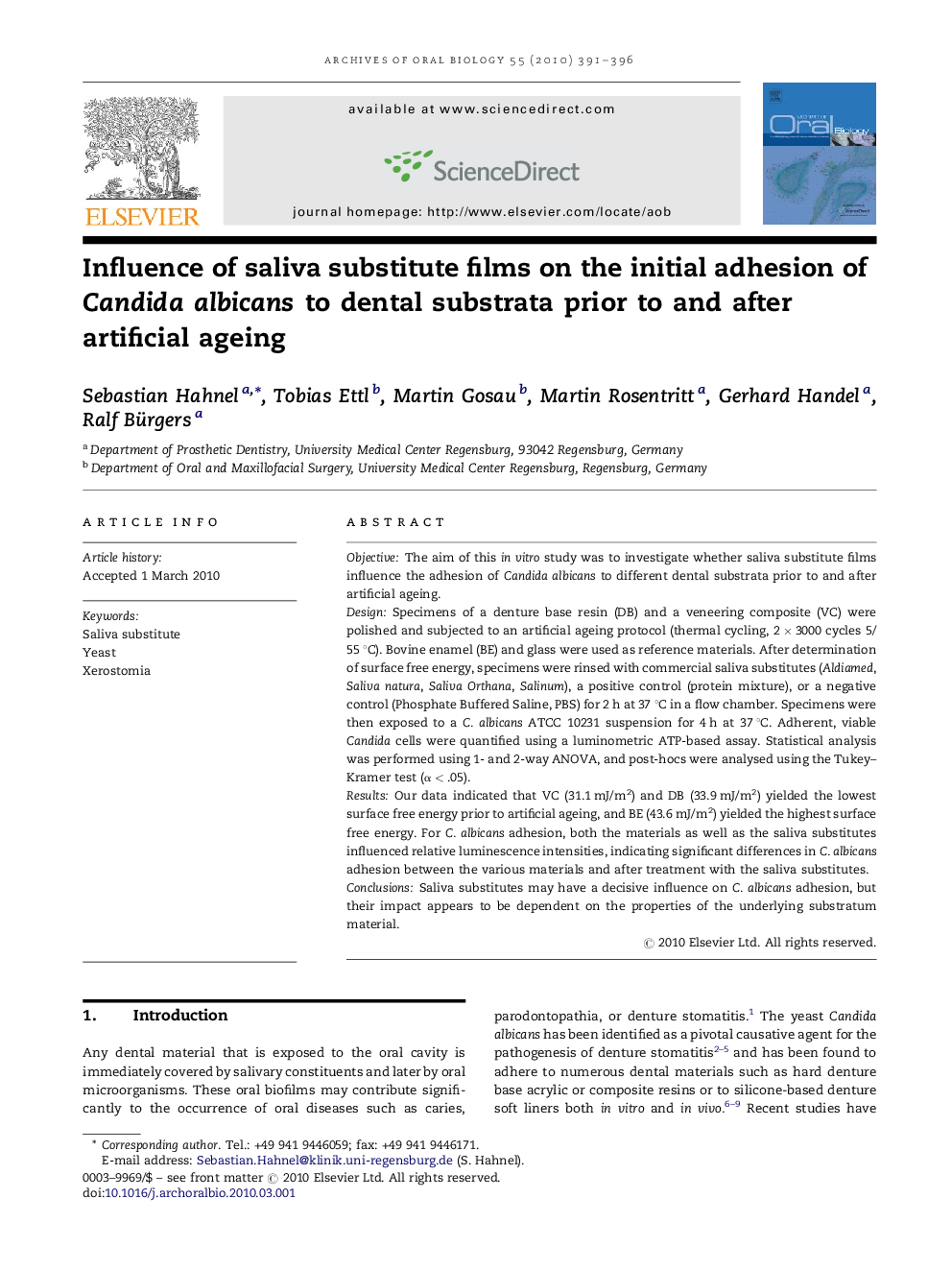| Article ID | Journal | Published Year | Pages | File Type |
|---|---|---|---|---|
| 3121387 | Archives of Oral Biology | 2010 | 6 Pages |
ObjectiveThe aim of this in vitro study was to investigate whether saliva substitute films influence the adhesion of Candida albicans to different dental substrata prior to and after artificial ageing.DesignSpecimens of a denture base resin (DB) and a veneering composite (VC) were polished and subjected to an artificial ageing protocol (thermal cycling, 2 × 3000 cycles 5/55 °C). Bovine enamel (BE) and glass were used as reference materials. After determination of surface free energy, specimens were rinsed with commercial saliva substitutes (Aldiamed, Saliva natura, Saliva Orthana, Salinum), a positive control (protein mixture), or a negative control (Phosphate Buffered Saline, PBS) for 2 h at 37 °C in a flow chamber. Specimens were then exposed to a C. albicans ATCC 10231 suspension for 4 h at 37 °C. Adherent, viable Candida cells were quantified using a luminometric ATP-based assay. Statistical analysis was performed using 1- and 2-way ANOVA, and post-hocs were analysed using the Tukey–Kramer test (α < .05).ResultsOur data indicated that VC (31.1 mJ/m2) and DB (33.9 mJ/m2) yielded the lowest surface free energy prior to artificial ageing, and BE (43.6 mJ/m2) yielded the highest surface free energy. For C. albicans adhesion, both the materials as well as the saliva substitutes influenced relative luminescence intensities, indicating significant differences in C. albicans adhesion between the various materials and after treatment with the saliva substitutes.ConclusionsSaliva substitutes may have a decisive influence on C. albicans adhesion, but their impact appears to be dependent on the properties of the underlying substratum material.
